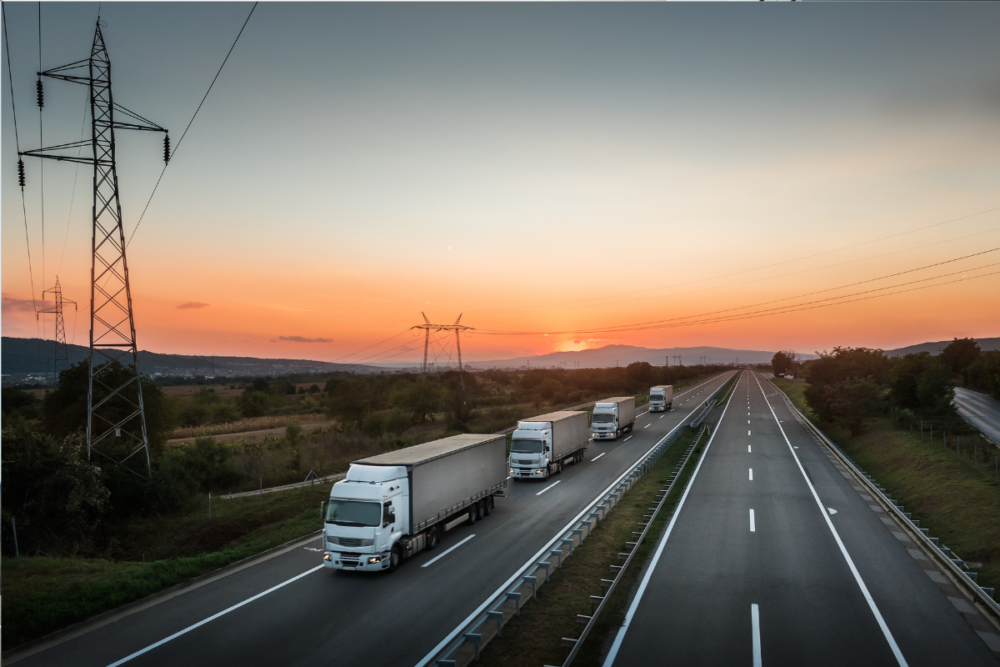Written by Kirstie van Oerle, Partner, Netcompany
As we look ahead to 2023, it is from the position of continuous volatility that the past twelve months have brought. Transport and logistics companies, still in COVID recovery mode, face a raft of challenges as external factors combine to ensure that the road before us is anything but smooth. Both industries are experiencing a heady combination of disruption and transformation, with exciting innovations starting to deliver on their potential.
We are already seeing the incredible potential of data-focused digital transformation to revolutionise how transport and logistics companies operate. Successful ‘data-fication’ will enable companies to absorb some of the shockwaves of ongoing disruption set to trouble the sector in the coming year and enable them to start to achieve the potential that digital transformation can bring.
With all this in mind, what are the main trends that will shape the movement of people and things in the coming year?
Here are five areas we expect to see advanced data use influencing transport and logistics companies in 2023:
- Macroeconomic factors will accelerate the need for digital transformation in the logistics sector. Sustained high fuel costs will have the biggest impact on the logistics sector in 2023, exacerbating already difficult operating conditions. This will drive a need for greater efficiency across the board and means businesses must seek productivity gains in an attempt to offset high fuel prices and to remain operating. Investment in digital transformation, in particular solutions that capture and manage real-time, high-quality data from multiple sources, can help businesses unlock efficiencies and adapt operations rapidly to prevailing conditions.
- Data dexterity will power innovation as electrification and automation rollout continues. As a general trend, the effective collection, analysis, management, and application of data will drive diverse use cases, covering everything from route planning and demand analysis to companies’ ability to integrate with the wider transport and logistics ecosystem. The sheer amount of data being generated is daunting for most organisations and making this into actionable data is critical.
With electrification continuing to roll out across road, rail, air and maritime transport, vast amounts of data will be generated. This must be managed, analysed, and shared to optimise performance and customer service. It must also be seamlessly incorporated into existing systems.
Organisations using legacy technology will struggle to extract data from siloes, or in some cases will not have it available at all. This will highlight the need for solutions that work with legacy tech but also unlock the power of the data within the business, making it more accessible and agile to power modern use cases and inform decision-making.
- Adoption of Mobility-as-a-Service (MaaS) will continue. MaaS offers new solutions for personal mobility using a mix of public and third-party transport options unified into a single user interface that simplifies end-to-end journey planning and payment. The ideal of being able to plan and manage a seamless multimodal journey is much more complex in reality.
MaaS will be more in demand as disruptions across public transport networks cause frustration and people seek alternative options.
Additionally, growing public awareness of sustainability, coupled with rising costs of running private vehicles, will also see travellers looking for greener and cheaper transport solutions. Transport providers must ensure they can provide the right level and sophistication of data to MaaS applications or risk being left out of the personal mobility loop.
- Last mile competition escalates. Logistics companies have been trying to solve the costly last-mile conundrum for decades, but the rise of omnichannel customer choices and greater competition means they must become increasingly flexible. Retailers that are facing recessionary pressures will be seeking last mile innovations that serve customer preferences while keeping costs under control as fuel and personnel costs grow increasingly unpredictable.
Whilst there will be a focus on moving to electric vehicles or even drone deliveries, solutions such as crowdsourcing private couriers through Uber-style apps and setting up neighbourhood collection points are just two options, and we will see more ideas forming. Advanced data availability and real-time analysis will be critical for logistics providers to ensure they know where goods are, what delivery options are available to them, and what costs these might incur.
- Supply chain disruption will drive innovation in the logistics sector. Freight disruption is set to continue well into 2023 due to the war in Ukraine and the continuing Covid situation in China, impacting supply chains and continuing to create bottlenecks. These problems – which could become endemic – need solutions such as agile alternative routing and advanced warehousing strategies to minimise the amount of disruption experienced by customers.
Companies need greater visibility and control over logistics flows and the ability to share this information with stakeholders in the product journey. Consequently, data availability and analysis capabilities are critical to enabling logistics companies to adjust processes in real-time to minimise costs and speed deliveries.
Unlocking data to release its full potential will be central to the transport and logistics sector evolution in the coming year, but it won’t be without its challenges. Legacy technology, siloes, and the inability to open proprietary data to third parties may all act as blockers. By building data platforms that work collaboratively with legacy systems, companies can remove the risks associated with rip-and-replace projects, while still evolving into more adaptive, responsive businesses that today’s volatile environment demands.


